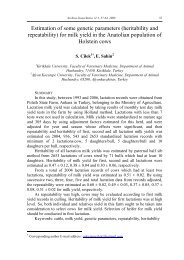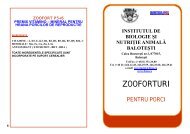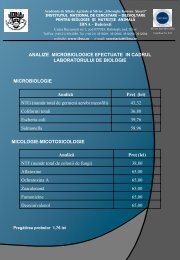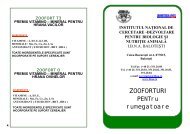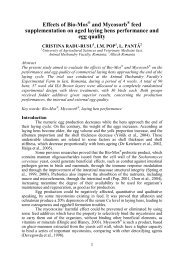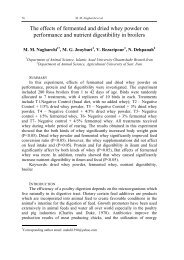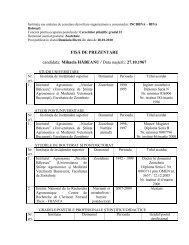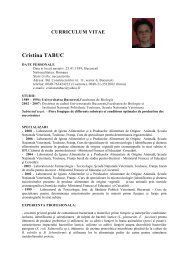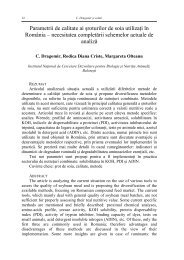Protein requirement of Japanese quail (Coturnix coturnix ... - IBNA
Protein requirement of Japanese quail (Coturnix coturnix ... - IBNA
Protein requirement of Japanese quail (Coturnix coturnix ... - IBNA
Create successful ePaper yourself
Turn your PDF publications into a flip-book with our unique Google optimized e-Paper software.
38<br />
Y. Cufadar et al.<br />
(1984) suggested that the trace mineral supplements to chemically<br />
defined diets should contain at least 2 ppm B. several studies have<br />
indicated that B is an important mineral normal bone formation, egg<br />
production, eggshell quality parameters in laying hens. Wilson and<br />
Ruszler (1995) investigated the effects <strong>of</strong> supplemental dietary B on egg<br />
production and bone strength <strong>of</strong> laying hens. No significant differences<br />
were observed in the bone shear force, shear stress or the shear<br />
fracture energy at any <strong>of</strong> the B concentrations (3.5, 7, 14, 28 or 56<br />
mg/kg B). Qin and Klandorf (1991) indicated that B did not affect shell<br />
quality but increase tibia bone ash. Eren et al. (2004) investigated that<br />
dietary B supplementation (0, 10, 50, 100, 200 and 400 mg/kg B) effect<br />
on egg production, interior and exterior egg quality in laying hens. The<br />
egg quality parameters were affected by the dietary B levels. Yeşilbağ<br />
and Eren (2008) reported that supplementation dietary B laying hens<br />
better eggshell quality. Olgun et al. (2009) reported that B<br />
supplementation had no effect on eggshell thickness and eggshell<br />
breaking strength in molted laying hens. Mızrak and Ceylan (2009)<br />
indicated that dietary supplemental B had no effect on tibia and femur<br />
breaking strength in laying hens.<br />
The purpose <strong>of</strong> this study was to determine the effects different<br />
sources <strong>of</strong> B supplementation to diet on eggshell quality and tibia<br />
breaking strength characteristics in laying hens.<br />
MATERIAL AND METHODS<br />
At 44 weeks old 60 laying hens (Super Nick White) were fed to five<br />
dietary treatments during the 44-72 weeks periods. Each treatment<br />
consisted <strong>of</strong> six replications <strong>of</strong> 12 hens (two hens per cage). Five<br />
treatments diets consisting <strong>of</strong> control and plus containing 300 mg/kg<br />
boron as boric acids, anhydrous borax, borax pentahydrate and borax<br />
decahydrate, respectively. During the experiment, feed and water were<br />
used as ad-libitum.<br />
The eggs were subjected to determine characteristics <strong>of</strong> egg shell<br />
quality parameters (shell thickness and shell breaking strength) on all<br />
collected eggs produced at the last two days <strong>of</strong> each period during the<br />
experiment. Egg shell breaking strength was measured using a<br />
cantilever system by applying increased pressure to the broad pole <strong>of</strong><br />
the shell using an instrument (Egg Force Reader, Orka Food<br />
Technology, Israel). Eggshell thickness was average eggshell measured<br />
at 3 locations on the egg (air cell and two location in the equator) using a<br />
micrometer (Mitutoyo, 0.01 mm, Japan).<br />
Bone mechanical properties were determined from the loaddeformation<br />
curve generated from a three point bending test (ASAE<br />
Standard S459, 2001) using an Instron Universal Testing Instrument


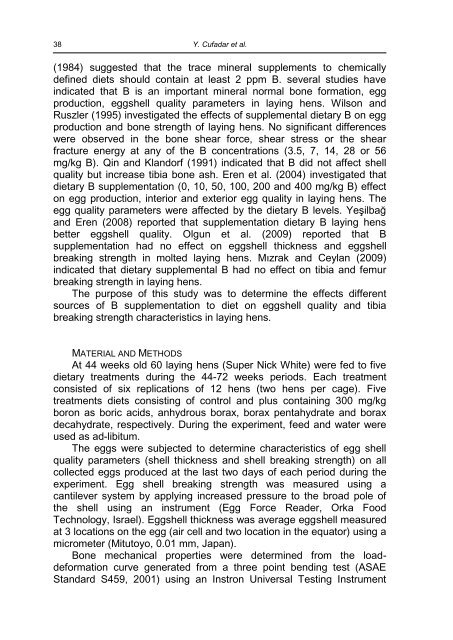
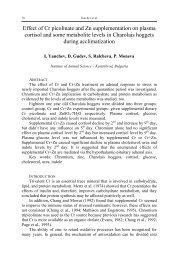
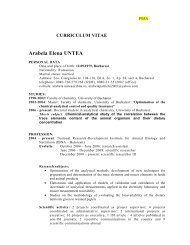
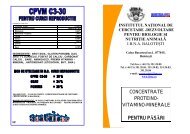
![( ) ( ) [ ] ( ) ( ) ( ) ( ) [ ]n ( ) ( ) [ ]n](https://img.yumpu.com/22443310/1/184x260/-n-n.jpg?quality=85)
